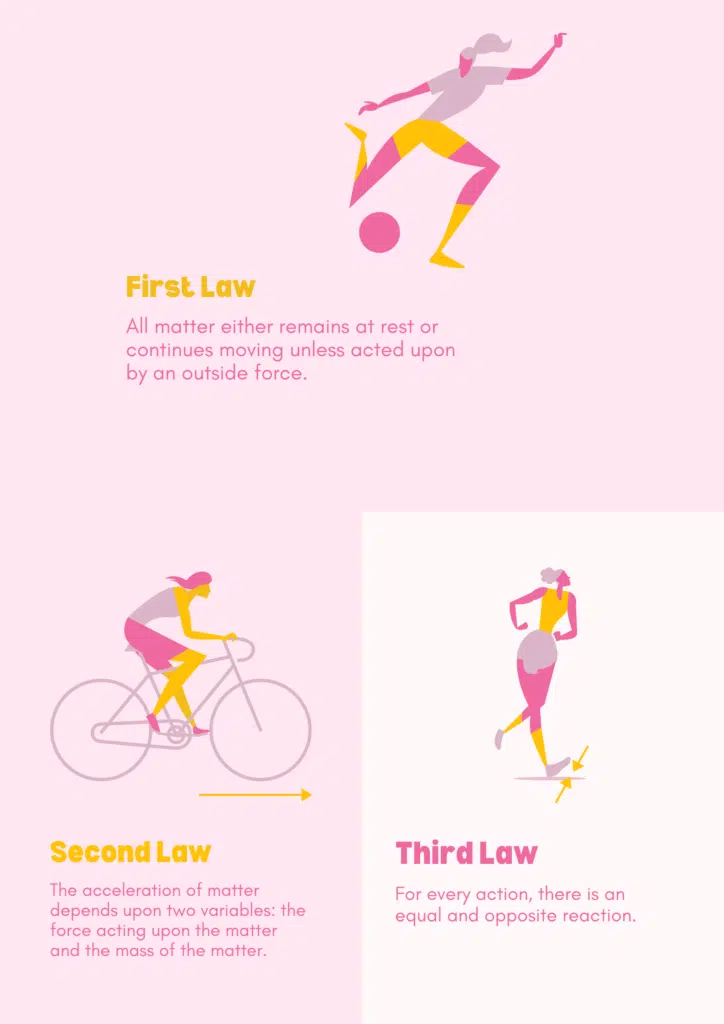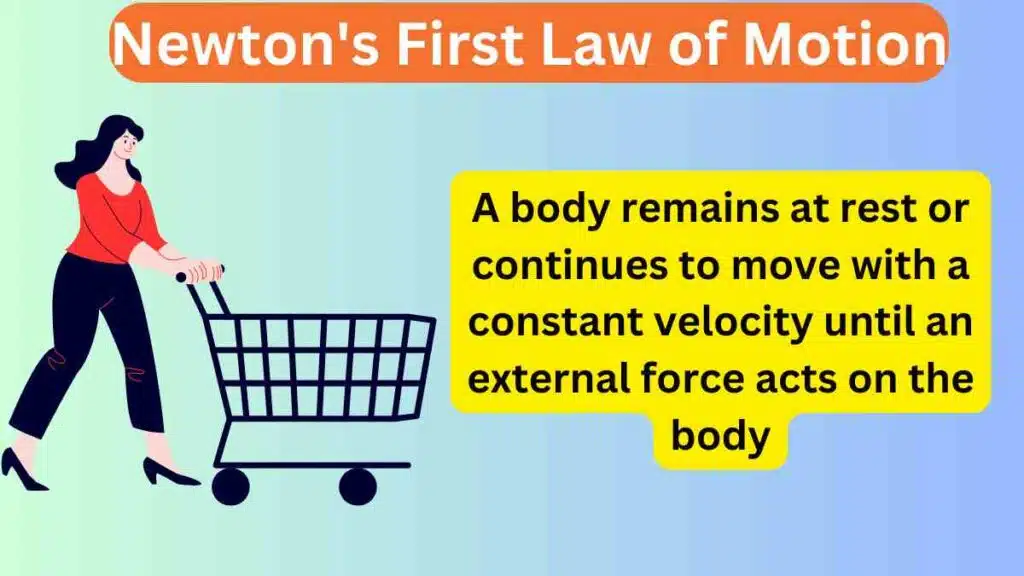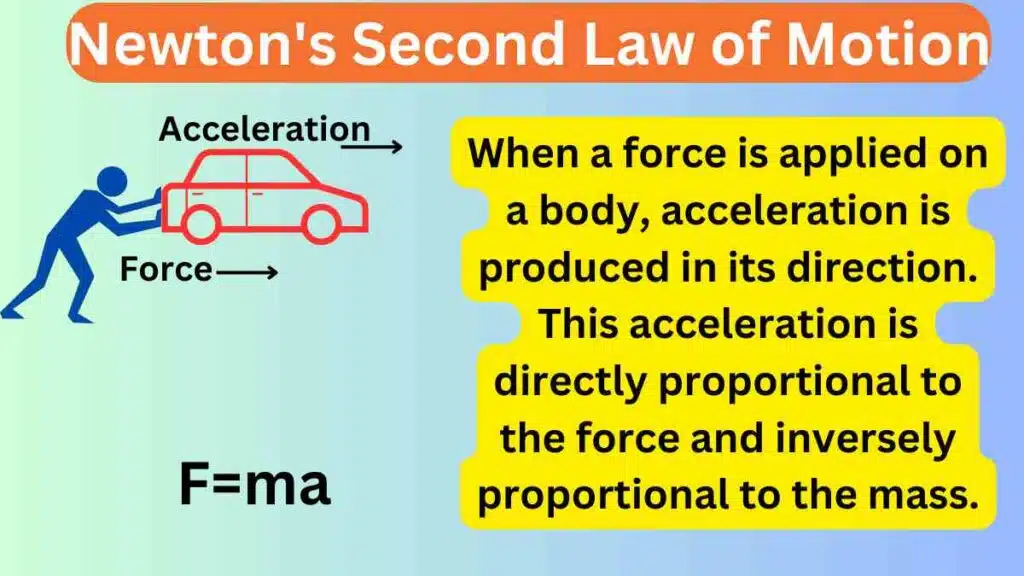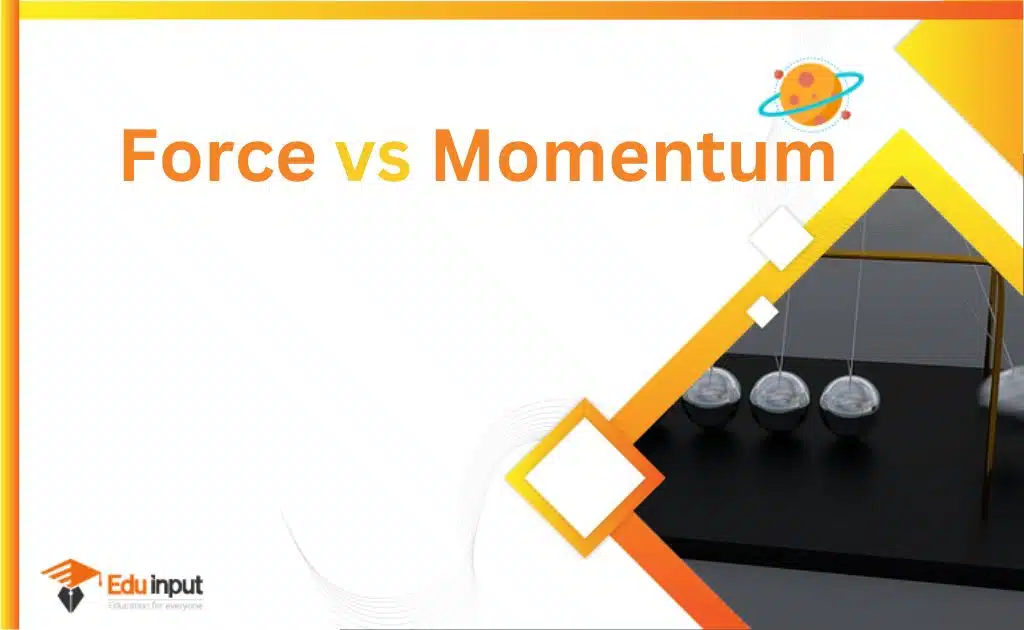Newton Laws of Motion-Definition, and Examples
The Newton laws of motion establish the relationship between the body’s motion, mass, and force. Newton (1642-1727) researched and developed ideas for the movement of Galileo (1564-1642). He published his laws in a book in Latin “philosophiae naturalis principia mathematica” which means, “the mathematical principles of natural philosophy”.
Download the pdf notes of Newton Laws of Motion Class 11 Physics

Newton’s Laws of Motion
Newton’s laws of motion are applicable only low speed as compared to the speed of light.
Relativistic mechanics developed by Albert Einstein can be used for fast-moving objects. It can be applied to atomic particles
Newton’s first law of motion
Newton’s first law of motion state that “A body remains at rest or continues to move with a constant velocity until an external force acts on the body”. This is also called the “law of inertia”.

In simpler terms, an object will not change its state of motion (whether it is at rest or moving with a constant speed in a straight line) unless an external force is applied to it. This law emphasizes the concept of inertia which is the tendency of an object to resist changes in its motion.
What is Inertia?
It is the quality of the body that resists changes in the state of exercise and rest. Inertia is directly proportional to the mass of the body.
Newton’s laws of motion examples
- A dropped ball continues falling until some force stops it
- If you let go of the moving cart, it will continue to rotate (eventually it will stop due to friction).
- Apples lying on the table do not move spontaneously
Newton’s second law of motion
“When a force is applied on a body, acceleration is produced in its direction. This acceleration is directly proportional to the force and inversely proportional to the mass.”

In simpler terms, if you apply a force to an object, it will accelerate in the direction of that force, and the amount of acceleration depends on the strength of the force and the object’s mass.
Mathematically
F=ma
Unit of force
The SI unit of force is Newton.
1N=1kg×1ms-2
The force, which produces an acceleration of 1 ms-2 in a body of mass 1kg, is 1 Newton
Dimension of force
[MLT-2]
Newton’s Second Law examples
- Trucks take longer to stop than cars.
- Being hit by fast-moving baseball is more painful than slow-moving baseball. The mass of each sphere is the same, but the force depends on the acceleration.
- It takes more effort to move a heavy box than a light one.
Newton’s third law of motion
“Action and reaction are equal in magnitude but opposite in direction” or “Every action has an equal and opposite reaction.”

This law explains that whenever one object exerts a force on a second object, the second object exerts an equal but opposite force back on the first object. These forces always occur in pairs and act on two different objects.
For example, when you push a book across a table, you exert a force on the book in one direction. Simultaneously, the book exerts an equal and opposite force back on your hand. This is why you feel resistance when trying to move the book. The forces are equal in magnitude but act in opposite directions.
FAB=-FBA
Action and reaction never act on the same body.
Newton’s third law examples
- Flight motion of a bird
- Gun Fire
- A person walks on the ground
Frequently Asked Questions(FAQs)
What is Newton’s first law of motion?
According to the first law of motion an object that is not being acted on by an outside force will remain at rest or, if it is in motion, will continue moving at a constant velocity.
What is Newton’s second law of motion?
Newton’s second law is a quantitative description of how forces can change the motion of a body. It states that the time rate of change of momentum for a body is equal in both magnitude and direction to the force imposed on it.
What is Newton’s third law of motion?
The third law of motion, also known as the law of action and reaction, states that if one body exerts a force on another body, the second body will exert a force that is equal in magnitude and opposite in direction to the first force.
What are Newton’s laws of motion all about?
Newton’s laws of motion help us understand the relationship between an object’s motion and the forces acting on it. The first law tells us that an object will not change its motion unless a force acts on it.
The second law states that the force on an object is equal to its mass times its acceleration. And finally, the third law explains that there is an equal and opposite reaction for every action.
Why are the laws of motion important?
Newton’s laws are essential to our understanding of motion and how it works in relation to the things we see and do in everyday life. Without these laws, we wouldn’t know why we don’t float out of our bed or fall through the floor of our house.
By understanding these laws, we can better predict and control the movement of objects around us.







Leave a Reply